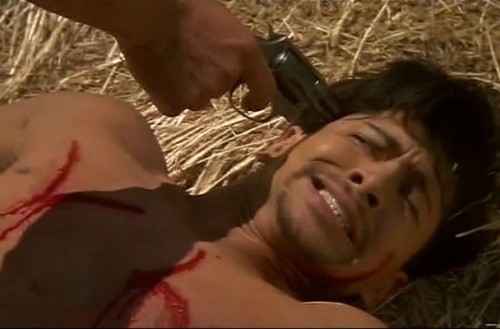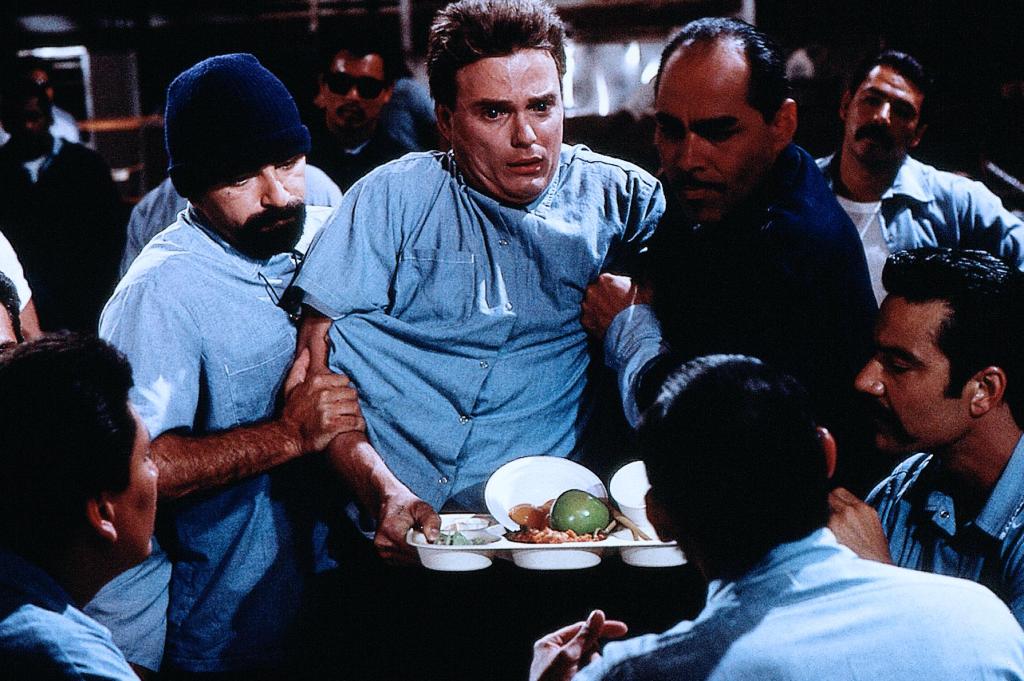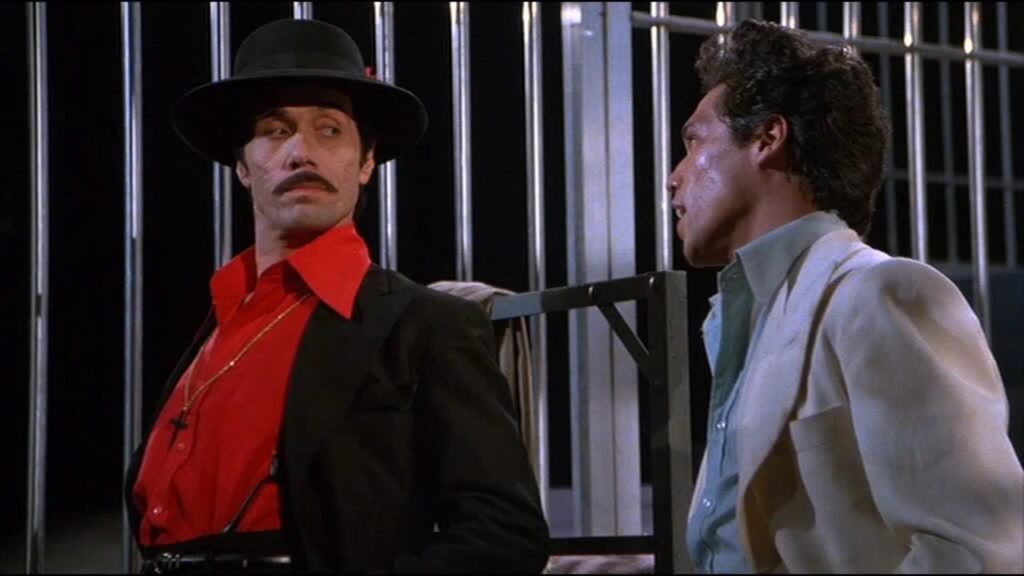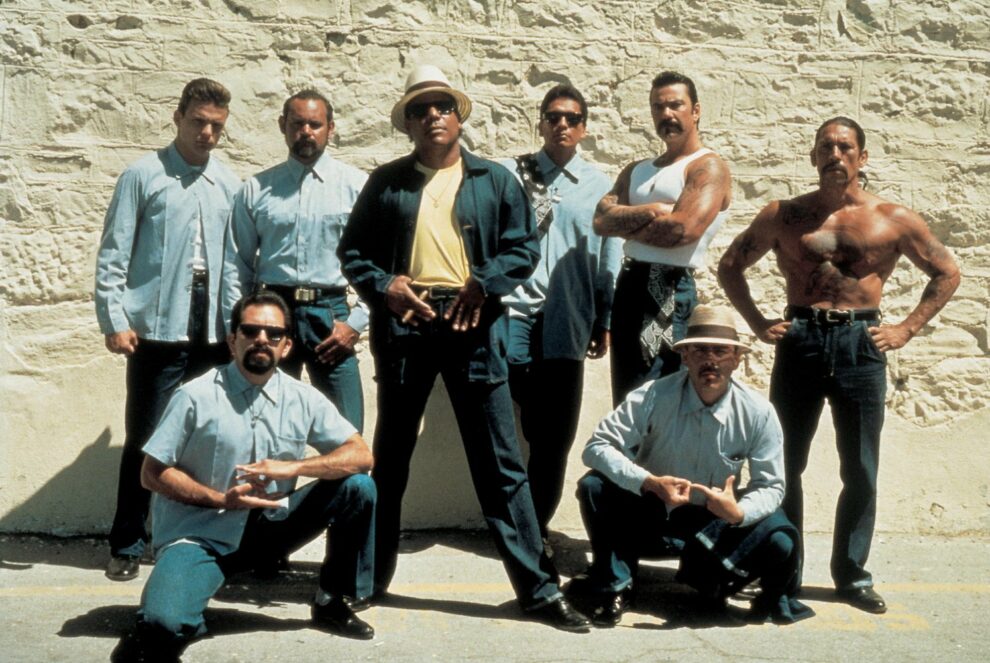What can you say about “Blood In, Blood Out: Bound by Honor” (1993), the Chicano exploitation flick that hasn’t been said already? “Blood In, Blood Out” is officially 30-years-old now and as someone originally saw the film in the theater, it’s odd to me that it’s more popular now than it was then.
It has generations of obsessive fans by now, dedicated social media accounts and merch galore. But for the life of me, I simply cannot comprehend why people hold this odd film and its perverse characters in such high regard, even after all these years.
“Blood In, Blood Out,” which was directed by non-Chicano, Taylor Hackford, is allegedly based on the “true life” experiences of Chicano poet, Jimmy Santiago Baca. How much of the film is actually based on his life remains a mystery, but a quick glance at his bio reveals that he did five years in Arizona State Prison in his early twenties—three of them in isolation—where he began to read and write poetry and eventually submit his writing to magazines.
The story for “Blood In, Blood Out” is credited to Ross Thomas, while the screenplay is partially credited to Baca in addition to Jeremy Iacone and Floyd Mutrux. Mutrux also wrote the screenplay for American Me and was its executive producer.
Murderers and Drug Dealers

The “Blood In, Blood Out” fanbase, which tends to be sensitive about criticism, refuses to let the film, or its characters, die. Like the undead in zombie movies, the characters of “Blood In, Blood Out” have been resurrected from the entertainment grave over the years, where they continue to this day in search of endless fandom, merch, lore, myth and even the possibility of a “Blood In, Blood Out” sequel, which is just flat out ridiculous.
You absolutely will not find another Chicano film that has the kind of fandom that “Blood In, Blood Out” does—no other film even comes close. Further, no other culture obsesses over prison films to the extent that “Blood In, Blood Out” fans do. “Blood In, Blood Out” competition, “American Me,” has its own fans and even some merch, but not to the degree of “Blood In, Blood Out” fandom.
Obviously, people are allowed to have their fandom and enjoy what they like. After all, people get obsessed with things like Harry Potter, Game of Thrones, Star Wars and comic book movies etc. But in no other fandom on earth do people hold characters in such high regard that are rapists, mass murderers, drug dealers and worse.
I know this might be shocking to some, but you’re not supposed to get your culture from a film, certainly not an exploitation film. This is lost on those who worship this movie and its characters. We’ve achieved this bizarre point in Chicano pop culture where it’s difficult to discern if life imitates art or if art imitates life.
It’s just a movie! I can already hear people saying. And I would have agreed 30 years ago. I too was a fan when the film came out. I too own a copy of the DVD and I too laugh at the memes. But “Blood In, Blood Out” is more than a mere film at this point—much more.
It’s an obsession for many people and a business venture for others. Its characters have reached this weird, mythic status that is usually reserved for science fiction, horror and fantasy films. Frankly, I’m shocked there’s not a “BIBO-con” at this point.
Darth Vader, despite being a villain, achieved mainstream recognition and is embraced as an icon of the genre. I would argue that Popeye Saavedra, aka “Pipi from La Onda,” has also achieved mainstream recognition—people know him by his red underwear! And despite being a pimp, a drug dealer, a backstabber and a rapist, he too is embraced as an icon of the genre.
Just as people wear Darth Vader tees and recite Vader quotes, they also wear Popeye tees and know his dialogue line for line. This says more about the fandom than it does the film. And that’s my point.
Prison, Machismo, Homoeroticism

If you search online, you will find tons of “Blood In, Blood Out” merch. Everything from t-shirts to posters, prints, artwork, stickers to coffee mugs and even coloring books (seriously). People love these characters! Several of the actors from the film make a living appearing at swap meets, selling autographs, doing advertising, selling merch and some even have Cameo accounts.
One of the truly puzzling things about “Blood In, Blood Out” is that, whether intentional or not, the film is incredibly homoerotic. This is bizarre considering the fanbase.
Previously, “American Me” was the most homoerotic prison movie ever made, but “Blood In, Blood Out” swooped in and knocked it out of the park. Olmos received death threats for the portrayal of rape in his film, so it’s unclear why “Blood In, Blood Out” gets a pass in that regard, but I digress—as I said, one of the writers worked on both films.
Consider the fact that the film is three hours long and there isn’t a single female love interest for any of the characters to be found. There’s not even a hint of one aside from when Cruz is attacked with his girlfriend at the party.
The closest thing we have to a “relationship” is the one between Miklo and Big Al. During that courtship, Miklo kisses Big Al on the mouth, tweaks his nipples, sucks his finger and squeezes his package. He even tells him he’s going to “lick him clean.” This is all in addition to the fact that Popeye tries to rape Miklo on camera and mentions later on that he would like to “put him back in high heels.”
Popeye is also a pimp for transvestite prisoners, whom we are led to believe through his actions as a pimp, that he has raped at least some of them. And people love this character! Why? No one has ever really formally questioned why these kinds of films typically have these themes in them but it’s definitely there for interpretation.
When it was initially released, “Blood In, Blood Out” was treated as nothing more than exploitation and its characters as caricatures. The reviews of the time are largely spot on, but fast forward 30 years later and these characters are now treated like warped Disney icons and the film as something almost biblical.
Chicano Cinema and Hollywood

It’s interesting revisiting this film three decades later and through a different lens. Much like the film Friday (1995), where I once identified with Craig and Smokey, I now identify with Craig’s father. Growing up will do that to you. So why then does the “Blood In, Blood Out” fanbase refuse to grow up?
Film critic Roger Ebert argued that there are no role models or heroes in “Blood In, Blood Out” and its “nihilistic” story but I disagree. When you watch the film as an adult, it becomes clear that Paco, despite his many flaws, is the “hero” of the story. But the film portrays Paco as the villain, the sellout, the coconut and the pig, and Miklo as some kind of Chicano sage.
This is a gross portrayal and sends the wrong message but people eat it up.
Despite its confused message or whatever its fanbase projects onto the film and its characters, “Blood In, Blood Out” is not about Chicanismo. It may start off in that vein but quickly degrades into exploitation, caricatures and Hollywood Shuffle-level tropes.
No matter if you like this film or not, it’s important to distinguish when something is supposed to be a cultural landmark and when it’s supposed to be exploitative. Films like “La Bamba,” “Zoot Suit,” “Stand and Deliver” and “Mi Familia,” just to name a few, are cultural landmarks for Chicano cinema. But you will not find a rabid and obsessive fanbase for them like you will with “Blood In, Blood Out.”
And while fandom is fine on its surface, it’s when these things turn into something more that there’s an issue. “Blood In, Blood Out,” with its dark and nihilistic story and perverse characters, in my opinion, should be left as a relict of the 90s and watched for fun, rather than be treated as serious filmmaking and or some kind of cultural icon.












